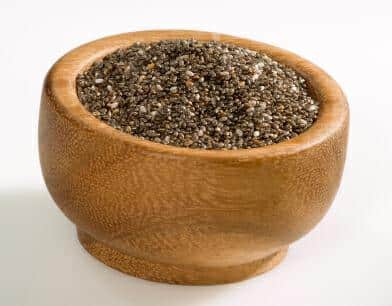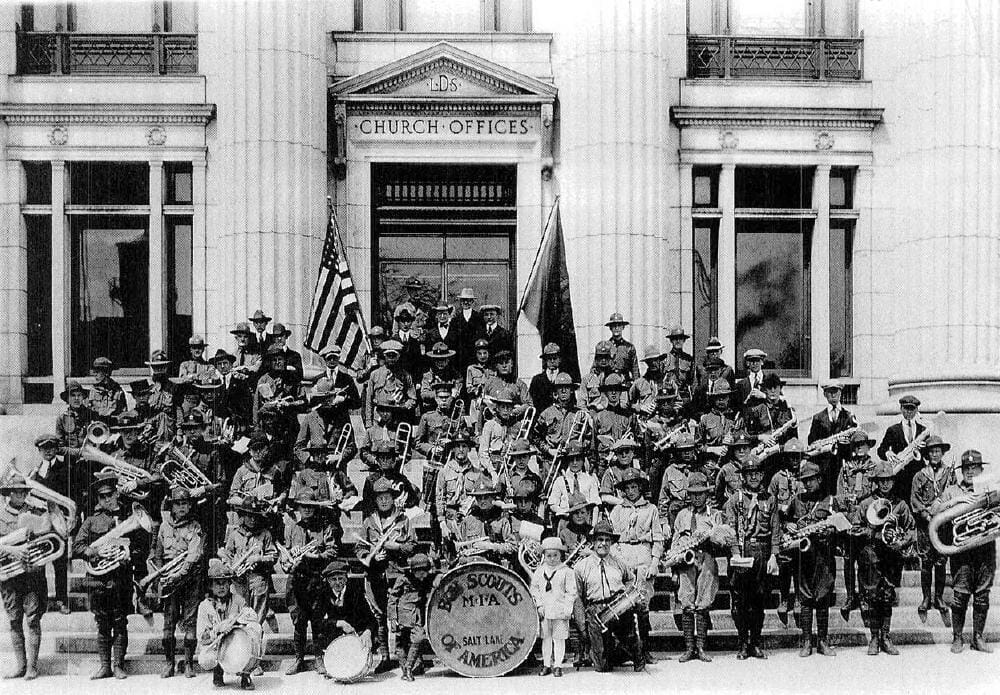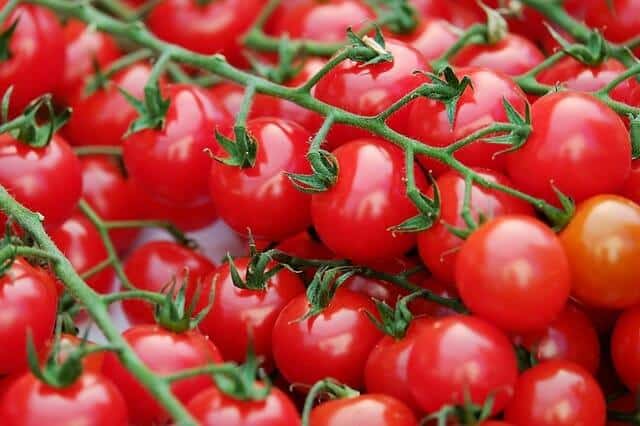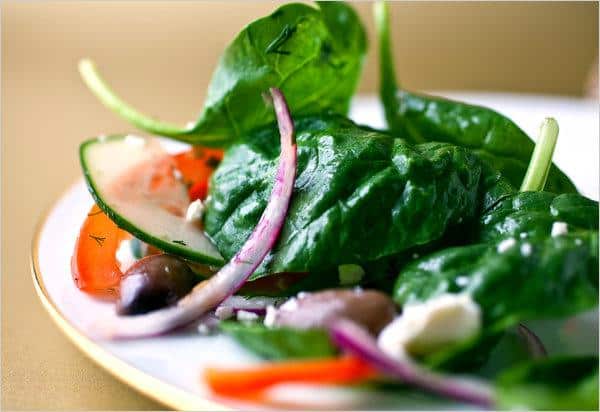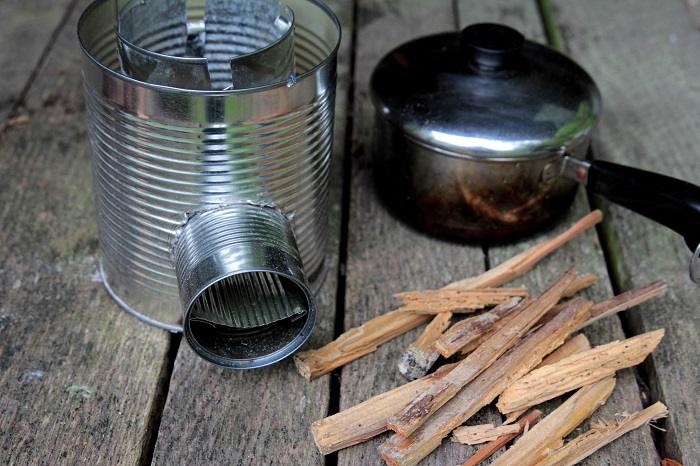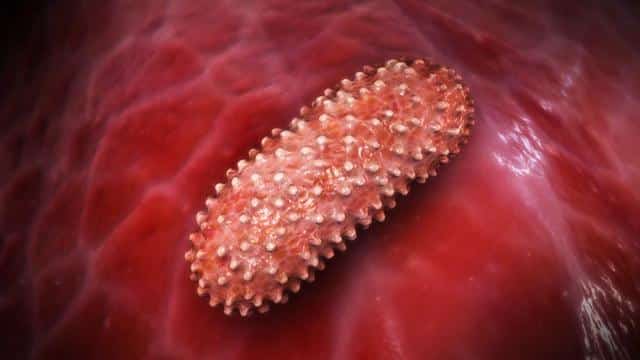 Chia is the subject on this week’s Off the Grid Radio, as Bill and Brian talk with Nick Watson from the Chia Seed Growers and a member of the Rural Production Society co-op of growers in the volcanic regions of Mexico.
Chia is the subject on this week’s Off the Grid Radio, as Bill and Brian talk with Nick Watson from the Chia Seed Growers and a member of the Rural Production Society co-op of growers in the volcanic regions of Mexico.
Nick discusses the ethno-botanical origins of chia (where the botanical source actually originated from), and how RPS seed grown at an altitude of 8,000 feet along the slopes of the volcanoes in Mexico is so much more potent and bioavailable than the chia you get from the lowlands of Argentina… where much of the available chia seed is grown today.
[powerpress]
Off The Grid Radio
Ep 058
Released: July 22, 2011
Brian: Ladies and gentlemen, welcome to Off the Grid News – the radio version of offthegridnews.com. I’m Brian Brawdy, as always along with Mr. Bill Heid. Bill, how are you sir?
Bill: Brian, I’ve never been better in my life, except for it’s a little warm today. A little warm … I think it was 100 yesterday … sweating. We’re not sweating too bad here yet.
Brian: No, not in the studio. All the power’s going out around us.
Bill: The power did go out down the street.
Brian: Hopefully we get our hour in.
Bill: Everything we said about the grid – it can’t handle it so it goes out. People say we’re crazy. And we are crazy.
Brian: Clearly. You’ve seen my Rorschach test. There’s no debating that I’m nuts.
Bill: Definitely. But today we want to talk, Brian, as we get into some hard times, as we get into what some people say is a meltdown. Certainly if you look at what is going on in Europe, they’re going through a true, economic meltdown. It’s harder and harder to survive. If you’re going to be more self-reliant, you’ve got to find foods that are helpful in those situations. You’ve got to get yourself off the grid of fast food and all the things that are detrimental to your life and start eating more nutritionally dense foods. I know it’s a mantra that we have here. WE talk about it all the time. But today we want to talk about a food that both you and I have discovered that’s actually had an impact – from our conversation this morning, it’s had an impact on you in just a few days. This is anecdotal, everyone, so if there’s any alphabet agencies listening to our show, this is not a clinical study this is a Brian Brawdy … and the FDA has not approved this. I don’t think anybody has approved this, other than you. You’ve approved it.
Brian: I’ve approved it. I should say, Bill, for our listeners that aren’t necessarily familiar with our setup here at Off the Grid News, our parent company, as you know, is Solutions from Science. A lot of times I’ll do projects that Solutions from Science says “we’re looking at this. We’ve traveled the globe to find that. We’re doing all these things to give folks solutions to their headaches from science.” As you know, we go out and look for all this cool stuff. I am always testing the cool products that you find, wherever you find them. You bring them back and I go into the bat cave over there across Thomson and I look to test things out. Again, as you said, not anecdotal, I’m not a doctor, I don’t play one on TV. I should also say that I run every day, I work out, I watch what I eat. But, the only thing I’ve changed in the last five days has been the ingestion, at your suggestion, of this particular topic that we’re going to discuss today. I’m down six pounds in five days. Now, I’m not the kind of guy that has to lose a lot of weight so I’m not saying “watch out” – who’s the guy, Jeremy, who jumps around in the blue leotard?
Bill: Richard Simmons.
Brian: thank you very much. I’m not competing with Richard Simmons. I’m not saying any of that. I’m saying that for my overall health in the last six days, coupled with the fact that I’m up every morning at 4 o’clock, it’s great.
Bill: You’re saying you’ve got some extra energy.
Brian: Absolutely.
Bill: That’s a – wow! What could this stuff be? I’ve got a similar experience. Mine is anecdotal, it’s not clinical. I’ve used this particular product – I’m diabetic, as you know – I’ve used this product along with a very small amount of medication that I take and some exercise – to take myself from being diagnosed as diabetic to not diabetic. You won’t find too many people … I work at it pretty hard. I’ve cut my carbs and stuff, but the same food, I think, has helped me along that process. If I had to choose some foods – if I’m on a boat and we’re throwing stuff off because the waters are rough, I’m not going to throw this particular stuff off because this stuff really has helped me personally as well, and some other food that’s become famous in some books. There’s kind of a rave going on about this particular food right now but there’s some ins and some outs. There’s some kinds of it that are good and some kinds that aren’t as a superfood, as a survival food. I think it’s a survival food of choice for hard times. It’s something you’d want to store because it’s easily storable and it keeps quite a while.
Brian: Not just for hard times, but for thriving times. When we get into the history of this, Bill, as you know, these warriors way back when – and our guest will speak at length about that today – they didn’t consider their life to be a hard time. They were out winning. They were out kicking butt and taking names. They were out thriving. They were like “I’m a BA. I can fight. I can do. I can run. I can survive.” IT wasn’t just like “I better take this if I want to survive.” These guys were rock and roll – Ted Nugent would be digging these guys if he could travel back in time.
Bill: Every day they had to have this stuff because they’re on a schedule. [laughter]
Brian: Well, you know, you’ve got people to see, countries conquer – the globe. [laughter]
Bill: Other tribes to make slaves of.
Brian: Subjugate … sure. Before we get too carried away, and it’s not this particular product talking, Bill and I normally go off like this. Alright, ladies and gentlemen, we want to say hello – and I have to tell you, Bill, before we say hello to our guest, he has cornered and his group has cornered the market on what I believe, and given the research I’ve done of late, to be really the only chia, in terms of its beginnings, where it should be grown. It reminds me of that old commercial – “salsa, from New York City?” You have other people going “I’ve got these particular seeds. I’ve got this particular superfood.” But unless it comes from this particular region of the world, I don’ think you’re getting what you think you’re getting, which is why I’m even a little cautious about giving this guy’s name out because right now it’s you, me, Jeremy, a handful of other people know about him and how he’s able to get this amazing superfood. Should I give out his name? Should I say where he’s from?
Bill: You could say Mr. X. No, you can say his name.
Brian: You know I’m just kidding. Ladies and gentleman, it is our great pleasure to introduce to you Mr. Nick Watson from the Chia Seed Growers. Nick, I’m going to let you tell me all about RPS, which I guess in your country and your language is going to be a little different, but tell us all about RPS and why – if I’m correct Nick – that the chia that you grow is truly the chia that we all need.
Nick: Thank you very much for inviting me. I just wanted to say hello to all your listeners. It’s a wonderful opportunity that we have to educate the people on chia – miracle seed, as said by Dr. Oz. RPS is the English language equivalent of Rural Production Society. We’re a co-op of growers, deep in the high mountain altitude volcanic region of Mexico. We’re growing this crop the same way that it’s been grown for thousands of years in this area, originally by the Aztecs and probably the Toltecs and Olmecs before them. We grow it the same way as it has been grown for these thousands of years.
Bill: Nick, this was something grown by the Olmecs, you think, and it was growing naturally down there? You’re a little north of Mexico City, is that roughly the area that it’s been growing naturally or did the Olmecs use in the same ways that the Toltecs and Aztecs used it?
Nick: Yeah. We’re just south of Mexico City, very close to – let’s not get too specific – but really close to several volcanoes that are back to back, so to speak, with mountain snow peaks and so forth, which is odd for Mexico. But yes, we decided to bring it back into the ethnobotanical origin. This is where we’re growing it. We found wild chia growing in the mountains after spending months looking for the wild chia. There’s a whole story behind it, which is real of course, about how the Spanish discovered that the Aztecs were getting energy from this seed – tremendous energy to fight the battles. Cortez, which was the conqueror of Mexico, ordered all the chia destroyed. He burned it all. He had it all burnt so that they didn’t have the energy to fight against the Spaniards that were trying to conquer Mexico. But yes, we believe there is codex references to where the Olmecs and Toltecs were using this miracle plant, the chia, the chia seed, for medicinal purposes.
Brian: Nick, we’re going to have to run to a quick commercial break but obviously we want to pick up on that and a little more about this ethnobotanical origins. That’s a term that I did. We’re going to run to a quick commercial break. Ladies and gentlemen, come on back, right after this.
[0:09:42 – 0:14:03 break]
Brian: Ladies and gentlemen, welcome back. As the announcer says, boy do we have a better idea for off-the-grid living today. Bill, we were talking to Nick Watson from the Chia Growers Association. He was talking about a concept called ethnobotanical origins – there’s certain things that grow and you’ve got to get them where they originally grew. That’s what makes them authentic. That’s what makes them congruent. Ultimately, when we ingest them, that’s what makes them good for us.
Bill: I think plants that are harvested from where they were originally grown tend to take on properties that are a little more powerful than the ones that are transplanted. I think there’s another case where people have gotten in the way of this and, because of economics, we talk about “can we take this and grow this somewhere else more profitably?” It ends up that on the surface it might look like you can grow it more profitably, but just like around here where you see corn that’s increasingly being – the nutrients are being taken out of it, pump nitrogen in it, sell it by the bushel – but the nutritional density of it is lacking. Every year it lacks more. The trace elements are gone. By sticking with the standards of harvesting these plants where they’re originally found, there seems to be things – and Nick could probably tell us a lot more than I would know about but, boy, we sure hear that story from not just Nick but other guests as well that we talk to.
Brian: As I listened to Nick speak I thought of non-indigenous species. You hear about people talking in the Everglades someone let boa constrictors go. There are just certain things in life that weren’t designed to be in a particular ecosystem. Just not supposed to be there.
Bill: We’re sitting here right now, and I was just on the river over the weekend, and we have a problem with Asian Carp here.
Brian: They jump pretty high over at your place.
Bill: They jump around. They’ll jump into your boat. They get big. But they’re not really supposed to be here so they create all kinds of problems. But chia is supposed to be exactly where Nick is.
Brian: And we’re not going to tell everyone. Ladies and gentlemen, we’ll give you his name, Nick Watson. He is back with us, as he said, somewhere south of Mexico City a little bit in the ballpark of dormant or semi-dormant volcanoes, a couple of snow peaks, but that’s all we’re going to tell them. Nick, jump in here Tell us about ethnobotanical origins and are we right? Like that old commercial about salsa from New York City – if you’re not getting your chia seeds, you’re not getting the full boat, are you?
Nick: No. Let me give your listeners and yourselves a quick little bit of information on ethnobotanic. As you’ve described correctly, ethnobotanic means where the botanical source originated from. This is very important to many people nowadays, in Europe and the United States especially. They want to begin to get their nutritional products, medicinal plants, directly from the source. They don’t want it tweaked with chemicals. They don’t want it mass processed and changed from what originally nature intended it to be. This is where we’re growing, in the ethnobotanic origin of the chia plant and the chia seed. Let me give you a little bit of information regarding what makes the ethnobotanic origin of chia so special compared to other geoclimate regions where they grow. For example, they grow a lot of the chia in the United States, which is just starting to come into the US, is grown all the way down in Argentina. That’s on the other side of the world. Their winter is our summer and so forth. It’s not from that region. For example, we grow at 7,500 to 8,000 feet. That is very, very high along the slopes along a volcano. This is very important for the chia to grow at that altitude. Antioxidants, for example, anti-inflammatories – and I’ll get into that in a second. If Argentina and Bolivia were to grow at 8,000 feet, they’d be in the Andes. They’d be up there where the Yeti was. They would be in glacier country so they can’t grow at that altitude. They have to grow at about 1,000 to 1,500 feet. I’ll tell you why that’s so important. It has been shown by science, by botanical science, and the medical community is realizing this, that the higher altitude that you grow a fruit or a vegetable, the more antioxidants that fruit or vegetable has. This is common knowledge in the scientific community. Why? Because the ultraviolet rays are dosing the plant or the fruit with heavy doses of ultraviolet rays. You probably realize it when you go skiing or you go mountain climbing. You tend to get burnt much faster – sunburnt – much faster. That’s because there’s lower filters in the atmosphere. These ultraviolet rays push the plant or the fruit to protect itself against the UV rays and that protection is the antioxidants that the plant begins to produce in order to protect itself. This is a huge benefit for humans. That would just be one example. We’ve gone so far as to test our chia against other chias in different geoclimate communities where they grow them. For example, our chia has an astounding 12,700 ORAC which is an antioxidant value, anti-inflammatory value. All the rest of the chia grown in other parts is around 7,000 to 8,000 tops. That lends itself for us to be able to claim that our chia is 70 percent higher in antioxidants than any other chia on the market.
Brian: Nick, that term is ORAC?
Nick: That’s correct. ORAC stands for oxygen radical absorbance capacity. I’m sure you’ve heard of free radicals and how bad they are for our system. We eat inflammatory food, everybody does – sugar’s an inflammatory, dairy products to a certain extent are inflammatory. Everything in moderation is the idea. Alcohol is an inflammatory. That promotes free radicals in our metabolism that we need to control. The more antioxidant foods that we can take, the more anti-inflammatory type of foods we can take, to keep those free radicals in check, that’s where ORAC comes from. It’s a method of diagnosing how much ORAC – oxygen radical absorbance capacity – and our chia has an astounding 70 percent higher because of this altitude that we grow in.
Brian: I’m writing that down. That’s amazing. When you talk about the oxygen radical absorption capacity, that’s why when we say “chia from this particular region of the world – it’s untouchable when you get chia from the area of which you’re speaking for that reason.”
Nick: That’s right.
Brian: Do you know what else, Bill, I was thinking as Nick said that? It’s a lot the way the human cell works in the body. When a human cell is assaulted by these free radicals, it hunkers down and does what it can, but not unlike the high ultraviolet rays it’s trying to protect itself from sunburn. When you get to the center of a cell in the human body, it’s hyper fired up to make itself …
Bill: I think that’s a version of hormesis where there’s a slight agitation or inflammation and it actually makes the cell stronger. Too much, as Nick would say, of anything is a bad deal, but a slight agitation is very health indeed. He’s onto something here with this.
Brian: Alright, Nick, in addition to ORAC – we only have one minute, Nick, so let’s get a short answer. In addition to ORAC, are there other things that you’ve been able to test when you put your chia – we talk about a 70 percent difference between 7,800 to 12,700 – are there any other things that you’ve been able to quantify when it comes to testing your chia against the posers?
Nick: Very good question. Yes, by the way, we did that ORAC testing not just at any laboratory. We did it actually at Brunswick Laboratories in New Jersey, the leader and the patent holder on ORAC testing. We tested it against all these other … anyway, let me answer your question.
Brian: No, that’s fantastic. Obviously, an independent agency did it. Then let me just get this out – an independent agency, you said in Brunswick, they test a bunch of different and you came out with all flying colors.
Nick: We came out – even the chemist that was in charge of the analysis, which they do hundreds of analysis a week, the USDA actually uses them for their ORAC testing methods. The chemist was just astounded. She did the test twice and she said “we have never seen a chia seed with such high ORAC, anti-inflammatory, antioxidant properties ever, because the standard is around 7,000 to 7,500 per hundred grams and you’re coming in at 12,700. We had to do it twice.” Really, she was quite amazed by the origin. Of course these biochemists understand how important it is to get – how nature intends a product to be from that origin is going to produce much better.
Brian: Nick, let me interrupt quickly. We’re going to run to a quick commercial break. I’d like our listeners to think of that, that even the scientist, Bill, in Brunswick, New Jersey, doing the tests go “wait a minute. You’ve got to check that test again. This can’t be right. Let’s do a double chance.” Ladies and gentlemen, we’re going to run to a quick commercial break and then tons, tons, tons to learn from Nick about chia, when we return.
[0:24:32 – 0:28:49 break]
Brian: Ladies and gentlemen, Brian Brawdy back with you, as always with Mr. Bill Heid. And today Mr. Nick Watson from the Chia Seed Growers. Nick, we were saying right before we went into the break that the scientists had to do a double take, where you sent your version – I’m going to say the authentic version of chia seeds – out to be tested. They looked at it and said “wait a minute, we’ve got to run these tests again. This can’t be correct.” It just had to be a phenomenal result for your guys to get back.
Nick: We’re really, really happy about it, of course, and not just me but for the co-op in general, because it showed that growing things in origin – growing medicinal plants and crops in origin, nature intended it to be grown there so it’s always going to have the highest phytonutrient value. Also, the protection that nature affords the plant because God has figured it all out or nature’s figured it all out. It gives it the best of the plant protection for insects so you don’t have to use pesticides, for example, as in other countries where there are parasites that might go in. So, yeah, we were really, really quite happy about that.
Bill: Hold on a second. Tell us a little bit about what you just said because you went over that kind of quickly. If you – and this is typical – you take something that God had decided “this is where this is going to grow” and you transplant it, it’s not saying that you can’t transplant it, you can, but there’s always more to the story than what may be shortsighted humans would want to delve into. Sometimes we don’t find these things out until much, much later. You take this stuff and you send it to Australia or Argentina and what has to happen to grow chia there compared to where you’re at? You have to irrigate, you have to use pesticides. I’ll bet if you irrigate, you have a lower number in some of these critical categories by which you judge chia as well. Would that be an accurate assessment?
Nick: I think that’s a very good assessment. Being in Illinois and other parts of the Midwest, I think many of your listeners understand that irrigation has its advantages, obviously, because you can grow a crop; but also salt – irrigation is standardly known to cause salt deposits in the soil. You’ve got to take care of that because many crops do not like salt and they don’t produce as well. That’s an example of the western Australian chia, for example. They have lots of sun, low elevation, more protein in the seed compared to more antioxidant value. But, hey, people don’t take chia for protein. If they want protein they’re going to get it from other sources. People take chia, more importantly, for the fibers, the Omega 3 oils and also the antioxidant value. But getting back to your point, your comment and your question here, I think it’s – for example, I could give you examples more than anything. I just gave you an example about irrigation. I’ll give you an example about taking it to South America, for example. When they take the chia to Argentina and to Bolivia, because of the climate they have to be very careful about the end season of the crop almost before harvest. It’s the winter, that’s the normal crop rotation of when it comes into the fall, the leaves start falling and the flowering occurs, then the seeds start producing like crazy. If you get too much cold – chia’s an oil seed so it loves cold – it’ll produce more oil to protect itself but you have to be very careful about the frost. The problem with Argentina and Bolivia is that because they’re so close to the Andes they’re worried about that frost, so what do they use? They use paraquat. It’s a chemical which is accepted in low quantities but they do use paraquat as a defoliator which takes the leaves off, to trick the plant to begin flowering sooner and to begin seeding sooner.
Brian: Get out of here! It thinks it’s fall because its leaves are falling off?
Nick: That’s exactly right.
Brian: Unbelievable.
Nick: We know that paraquat has been used in some Colombian – those northern South American countries – for other defoliating purposes, but paraquat originally came from the Vietnam days when they had to defoliate the jungles.
Brian: Yeah, Nick, when I was younger I accidentally used a paraquat shampoo which is why I’m bald now. A lot of people don’t know that. Those people that may recognize my face go “Brian, how’d you lose all your hair?” “Oh, that paraquat shampoo.” Nick, seriously though, you’re telling us there’s a one-two punch. One, your chia gets all the benefits of being grown at a higher altitude, as you said 8,000 feet or above, because of its ability to beat back ultraviolet rays it packs in the antioxidants. But the flip side of that same coin is because you’re not using paraquat – or I imagine, Bill, a whole host of other chemicals – the flip side of the coin is your ORAC is higher because the plant isn’t using that energy to fight off the chemicals that might be introduced or that are introduced when chia is grown in other non-indigenous parts of the world.
Nick: It’s very true. Exactly. We don’t need to use paraquat because we’ve got a proper growing season. We begin to – according to the rains, of course – we begin to sow in late June and we have that affordability that we can continue to grow into December because we’ve got that perfect climate. We don’t have the problems with frost at that altitude that others may have in other parts of the world. We don’t have the water problem that maybe Western Australia has where they’ve got to irrigate. All these issues, nature already took care of this. God was right when he was putting this crop, or all crops, in the specific regions. Of course now with man, because of our feeding needs and because of our food needs, we need to grow crops in other areas. I certainly don’t discount that – corn for example, as many of your listeners will probably know – corn is grown up in the Andes and that’s wonderful. But how? Genetically modified. Do we want genetically modified? That’s not what we’re here for to discuss that.
Brian: Come back any time you want, Nick. Come back any time you want. We’ll do a whole other show on that. Alright, Nick, I don’t want to run out of time in this segment, but for our listeners who are going “this is so cool. I heard a bunch of things.” We’ve got three minutes till the next commercial break – what do we need to know? Talk to me about – we’ve talked about the growing and we’ve talked about the ethnobotanical origins. What do we need to know about your chia? Why does Bill have such great results? Why am I having early on such good results? What’s the scoop?
Nick: There’s three main things about chia phytonutrient value that are really quite good for humans and what we all want in many of our foods now. We’re being bombarded with how important fiber is, how important insoluble and soluble fiber are in our diets. I can’t remember which was mentioning about diabetes – diabetes can prevent it apparently. You can prevent the onset of it by taking high volumes of fiber. Chia has got that. It’s got over 30 percent dietary fiber, which is soluble and insoluble. That’s one very important source of fiber. It’s a little tiny seed but how important – it’s packed with fiber. The other one is Omega 3s. These are very important. Chia is a plant-based Omega 3. It is an ALA Omega 3 whereas with fish you could EPA and DHA Omega 3. The studies on ALA Omega 3s are incredibly promising. The important thing is that the oils, because chia seed is an oil seed, the important thing is that it’s packed with Omega 3s. For every 10 grams of chia that you eat, you’re getting 2 grams of Omega 3 oils. This is extremely important for our diet. We all know this, we’ve been reading about it. The third most important thing is the inflammatory issues. Chia prevents inflammation if taken correctly. It is an anti-inflammatory. Very important because of its antioxidant value. Those are the three areas. The Omega 3 oils, the dietary fiber that you get from it and then, of course, the antioxidant value – the anti-inflammatory. This is why the Aztec warriors would take this to make long runs through the desert and through the mountains without having to eat or drink water. They hydration properties are amazing. You can take chia and a glass of water and trek and trek and trek for hours on end without getting dehydrated.
Brian: Nick, we’re going to run to a quick commercial break. Bill, I’m thinking “no wonder Cortez wanted to burn all the crops.” IT really is a superfood.
Bill: He should have been eating it himself.
Brian: That’s right. Alright. We’re going to run to a quick commercial break. When we’re back, Nick Watson, for the final segment here, with the Chia Seed Growers. Right after this break.
[0:38:51 – 0:43:04 break]
Brian: Ladies and gentlemen, preparing you for the worst today. I’m Brian Brawdy, along as always with Mr. Bill Heid and our guest, Nick Watson, from the Chia Seed Growers. Nick, Bill and I started looking at each other as you were talking and shaking our heads going “we really did – when we bumped into you, we really did find a survival superfood.” Can you talk to us a little bit, briefly if you will because then there’s a couple of other questions I have for you, about the recent popularity – people that re into running, are into endurance sports and the like – tell us a little bit about how chia – I don’t want to say vogue, Bill, but how chia’s become a little, little more mainstream than it was, say, 50 years ago.
Nick: I think one of the most important things is that people, your listeners included, are looking for products that come from the origin, products that are good for their health so that they can take less meds. That’s the most important thing. Here we’ve got a product that’s very easy to take, especially with the way you’re presenting it – very easy to take. It just takes about 30 seconds, one minute and you’re done. You’re getting a lot of dietary fiber, you’re getting your Omega 3 oils and, more importantly, you’re staving off inflammation in your system. I think these are very, very good.
Brian: That’s a great point, Nick. Think about it Bill, how long would it take you to eat enough Omega 3 – how much fish would you have to eat, how much fiber would you have to have, soluble and insoluble? Here Nick’s saying “one minute.” Nick, you just take the seeds, as I’ve been doing, and I know Bill’s been doing as well, take the seeds, take the amount I want, I put them into the water and mix it up. You don’t have to grind these seeds. Is there any other little technique you could give our listeners?
Nick: There are so many but in the short amount of time we have, what I do personally is in the evening before I go to bed I take a tablespoon and a half of the chia, mix it in a glass of water for about 15 seconds and let it sit there. In the morning, when I get up, before breakfast I drink it. Sometimes I put it in a smoothie. My wife at times likes to put it in a smoothie with yogurt – low fat yogurt and other fruits and so forth. You can mix it in soups. It’s a great thickening agent. Instead of using eggs, for example, you can thicken sauces with it. There’s just so much you can do with it. You can thicken salad dressings, soups; you can basically sprinkle it over your cereal. You don’t have to grind it, like you said, like you do with flaxseed. Because of its antioxidant value, chia has a great shelf life – over two years. Flaxseed begins to go rancid – the oils begin to go rancid after two or three months and you have to grind them, whereas chia you do not have to grind them at all.
Bill: Isn’t it two years at maybe room temperature? If you refrigerate it you can probably get more out of that, can’t you?
Nick: That’s a very good point. You could probably get more of it. I never thought about that. Because we’re in the growing business, right? And in the mass storage business it wouldn’t be conducive for us, but certainly for your listeners it would be. I think whenever we can lower shipping costs by buying more – what do my wife and I do? When we buy, we buy in bulk, because I heard a long time ago from this millionaire guy – they asked him “one thing, how can we become like you? How can we have affordable income?” He said “buy all your food in bulk.” It was a small comment but I began to realize that this is so true. For my personal philosophy in trying to have a lower carbon imprint – why should I give the shippers their money when I can get that money back? By buying in bulk I pay less in shipping. All these things are very important.
Bill: Nick, another thing – and I totally agree, I think over the course of a lifetime, that’s a very important point about buying things like this in bulk – especially buying in bulk nutrient-dense foods. Back to the nutritional density on the runner’s side, this “Born to Run” book opened up the whole world of this as being used as a supplement for runners and under extremely difficult situations. Some of these Indians that the book talks about were running extremely long races. What do you think really was going on there in terms of – we’re talking about running 50 and 100 miles – what’s going on there in the body that makes this so good? We’ve heard the story before and the Aztecs, now fast forward, people are using it to run marathons and stuff. It’s going to work under any stressful situation like that, I would guess. What is it that’s going on inside your body? Is it how your body uses the fiber and the oils and the protein?
Nick: It’s actually quite simple. First of all, you both have probably noticed that after taking chia just for a few days, you probably realize that in the afternoon you’ve got that energy peak. Maybe if you needed to take a little nap around 4 or 5 o’clock in the afternoon that you didn’t feel that you needed to – you weren’t tired anymore. That’s the energy that chia’s giving you from the protein and from the Omega 3s. I didn’t mention protein but it is a very good source of protein. It’s got 20 percent – 2 grams of protein out of every 10 grams of chia that you take – a tablespoon gives you. That’s not an incredible amount but it’s plant-based protein which tends to metabolize better. It’s the protein in the chia; it’s the Omega 3s in the chia. That’s still under investigation but one thing we all know about, Omega 3s are definitely good for us. That’s what they keep telling us. They’re still being investigated for eyesight, for better brain function, for better metabolic health, they’re talking about maybe even Alzheimers or dementia – how Omega 3 staves that off. But more importantly, getting back to what your question was, the dehydration – the reason why you can take chia and run long distances is because it’s a hydrator. How many sports drinks have been looking for some product that can keep the body hydrated and then use it in their products? Because, geez, if you had a little pouch on the side of your belt while you were running and you could just eat some chia and run forever, that wouldn’t do very well for those sports drink manufacturers, so they want to get it in their drink as soon as possible. But as it’s new, they don’t have that opportunity. But this is a seed that from Solutions from Science. This is a seed that everybody has access to.
Brian: And, Nick, I would add to that, quickly, that another benefit of taking the chia seeds that we work with to get for our listeners from you is that – do you know what Bill? It’s congruent, it’s honorable. They’re seeds grown where they were intended to be grown. I know it’s a little spiritual of me, but that’s what I dig about it. It’s energy the way we’re supposed to have it, from where we’re supposed to be getting it. I kind of dig that. I’ve got to tell you, every time I take my tablespoon in the morning and the evening, I think a lot of the benefit comes from the fact that it comes from the garden where it was originally intended.
Bill: The Aztec garden.
Brian: The Aztec garden – no makeup, no pesticides, no spin – it comes from where God intended it to come from. Who can argue with that?
Nick: Yeah, because it has defenses. You hit on a very important point, more and more we’re realizing in this world that people want to get their products from the origin. In Europe, in Asia, especially in the United States, everybody’s beginning to question “where is this coming from?” I think that all started with that revolution of the backyard garden. This is the Aztec garden. It can’t grow in the United States so where do you want to get it? As close to the United States as possible, and that’s in our region, where it was originally grown, where nature intended it to be grown. There’s no pests, other than some grasshoppers – which that’s a whole other story, because the grasshoppers actually help us in late autumn, they actually help us defoliate the plant naturally.
Brian: Again, the way it was intended. The way it was intended. The spirit of it. I’m with you, my friend.
Nick: Exactly. People are like “what kind of pests do you have?” Chia’s got its own natural defenses. “Yeah, but tell me, Nick, what pests do you get for chia?” I said “well, ladybugs, but they only eat the leaves, they don’t eat the seeds.” “OK, what others?” “Well, grasshoppers come for about two or three weeks. They come and start eating the leaves but that’s good because it helps – nature helps the chia defoliate so it can grow more seeds.”
Brian: Nick, unfortunately we’ve only got about a minute left. Bill, any last quick question for Nick? I could talk to him for another hour or more.
Bill: The grasshoppers defoliate it naturally – tell me that there’s no design going on here. That’s just me.
Brian: I’m with you, my friend.
Bill: Floating my personal perspectives into it … it’s just like plants. Real quick, when we were interested in foliator spraying, in delivering nutrients to plants through the leaves we discovered that certain frequencies have played to plants, allowed that stomata to be open and to be receptive of the fertilizer that you use in your foliator spray. Guess what the frequency was? It’s the same frequency when birds sing. It’s the exact frequency that birds sing. If you play the frequency that birds sing, plants open up and are receptive to the nutrients. Take away the birds, take away the frequency, you have nothing.
Brian: It’s the web of life. And it’s the way it should be which is why I go back …
Bill: It gives you goose bumps to even think about it. It’s too big, it’s too amazing.
Brian: nick, we’re going to go ahead real quickly and get to our listeners how they can hook up with this truly amazing – as we’re calling it, a survival superfood. But before I do, I wanted to thank you for your time. It’s been a great education. If you could stick around for just a minute, we’ll go ahead and get to the close and then we’ll catch up after the show.
Nick: Sure. Thank you.
Brian: You’re more than welcome, my friend. Ladies and gentlemen, to learn everything you’re going to want about what we’ve been discussing today, please go to survivalsuperfoods.com. I can’t tell you, Bill’s a fan, Nick obviously is a fan, I’ve been taking it now for a week – huge fan, of the chia from the region that Nick was referencing in our show. Learn everything you’re going to need to know at survivalsuperfoods.com. As always, thank you for listening to Off the Grid Radio. Please email us your questions, your critiques, your suggestions – even suggestions for future show guests. Please email them to us at [email protected]. Of course you can find us on Facebook – the new and improved facebook.com/offthegridnews. And as always, follow us on Twitter @offgridnews. Thank you so very much. We know an hour is a huge chunk of your day. It really is an honor to have you spending it here with us. On behalf of Mr. Bill Heid, from everyone here at Solutions from Science, thank you once again for joining us at Off the Grid News.


